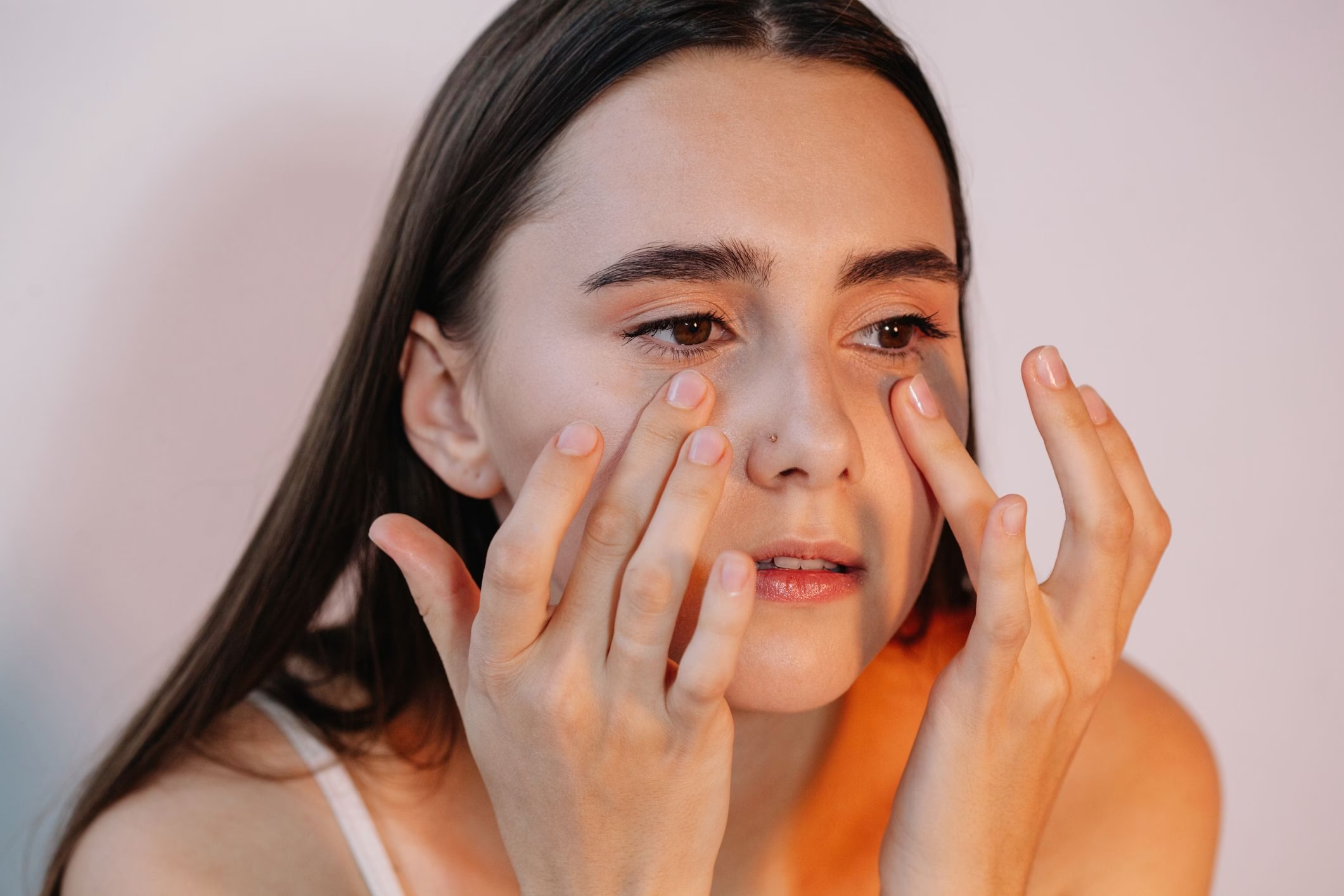Vitamin E Oil for Skin Benefits: The Glow-Boosting Secret You Shouldn’t Ignore
Walk down any skincare aisle or scroll through beauty reels, and you’ll notice one ingredient that never goes out of style — Vitamin E. Whether it’s tucked inside serums, creams, or those tiny green Evion capsules, Vitamin E has been celebrated for decades for its skin-loving benefits.
But does it really live up to the hype? Can a few drops of Vitamin E oil transform dull skin into a glowing canvas? Let’s dive into the science, the skincare magic, and the smart ways to use Vitamin E for real results.
What Exactly Is Vitamin E?
Vitamin E is a fat-soluble antioxidant, scientifically known as tocopherol. In skincare, it’s loved for two main superpowers:
- Neutralizing free radicals — the unstable molecules that cause premature aging.
- Strengthening the skin barrier, which keeps moisture in and irritants out.
You’ll often find Vitamin E as:
- Tocopherol or Tocopheryl Acetate on ingredient lists.
- Evion capsules (commonly used in India) that contain pure Vitamin E oil.
- Serum E, a concentrated skincare serum enriched with Vitamin E.
-
Deep Moisturization & Barrier Repair
One of the most well-known benefits of Vitamin E oil for skin is its intense moisturization.
Unlike water-based products that evaporate quickly, Vitamin E is lipophilic (oil-loving), which means it penetrates deep into the skin layers and seals in moisture. This makes it particularly effective for:
- Dry, flaky skin
- Winter skincare routines
- Repairing a compromised skin barrier
Pro tip: Mix a few drops of Vitamin E oil with your night cream or serum. This helps lock in hydration and repair overnight without making your skin greasy.
-
Antioxidant Protection Against Premature Aging
Our skin is constantly under attack — UV rays, pollution, stress, and blue light from screens generate free radicals that damage collagen and elastin.
Vitamin E acts like a shield, neutralizing these free radicals before they can cause harm. Regular use may help:
- Minimize fine lines and wrinkles
- Prevent dark spots and pigmentation
- Slow down the signs of photoaging (sun-induced aging)
Science fact: Tocopherol doesn’t just protect; it regenerates Vitamin C in the skin, making it a perfect pair in antioxidant skincare routines.
-
Brightening and Evening Out Skin Tone
Uneven skin tone, dullness, and post-acne marks are common issues — and Vitamin E oil can help tackle them naturally.
The antioxidant and skin-healing properties support cell turnover and help fade pigmentation over time, especially when combined with other actives like niacinamide or Vitamin C.
- It softens dark spots gradually.
- Reduces sun damage with consistent use.
- Improves overall glow and radiance.
Pro tip: Apply a thin layer of Vitamin E serum at night and let it work while you sleep. Avoid layering with too many actives to prevent irritation.
-
Healing Scars and Supporting Skin Recovery
One lesser-known but powerful benefit of Vitamin E on the face is its ability to support skin healing.
Vitamin E boosts collagen production and helps repair damaged tissues, making it useful for:
- Minor scars and cuts
- Post-acne marks (not active acne!)
- Stretch marks during pregnancy
Important: For fresh wounds or active pimples, avoid applying raw Vitamin E oil as it may trap bacteria. Stick to dermatologist-approved formulations.
-
Enhancing Your Skincare Products (The “Booster” Trick)
You don’t always need to buy a separate Vitamin E product. Sometimes, a single Evion capsule or a few drops of serum E can turn your regular moisturizer into a power-packed treatment.
How to use:
- Face mask booster: Add 2–3 drops to your DIY face masks for extra nourishment.
- Serum mixer: Blend with hyaluronic acid for deep hydration and glow.
- Body lotion upgrade: Mix with your body cream for smooth, radiant skin.
This is one of the most cost-effective skincare hacks out there — and it works.
Potential Side Effects & Precautions
While Vitamin E is generally safe for most skin types, it’s not suitable for everyone — especially in concentrated oil form.
- Acne-prone or oily skin may find it too heavy, leading to breakouts.
- Always do a patch test before applying directly to the face.
- Stick to nighttime use, as Vitamin E can make skin sensitive to the sun.
If you have persistent acne, eczema, or rosacea, consult your dermatologist before using pure Vitamin E oil.
How to Add Vitamin E to Your Skincare Routine
Here’s a simple, beginner-friendly routine:
Night (2–3 times a week)
- Cleanse your face thoroughly.
- Apply toner or essence if you use one.
- Mix a few drops of Vitamin E oil or serum E with your moisturizer.
- Gently massage into the skin and leave overnight.
For targeted treatment:
- Apply a thin layer on dark spots or scars only.
- Do not layer with strong actives like retinol or exfoliating acids at the same time.
Within a few weeks, you’ll likely notice softer, plumper, more radiant skin.
The Bottom Line: A Skincare Classic That Works
Vitamin E isn’t a trendy “new” ingredient — it’s a skincare classic with decades of research backing it.
From deep hydration and anti-aging to brightening and scar recovery, the benefits of Vitamin E oil for skin are impressive when used correctly. Whether you choose a Vitamin E serum, Evion capsule oil, or a moisturizer enriched with tocopherol — consistency is key.
Your skin deserves ingredients that nourish, not just hype. And Vitamin E is one ingredient that delivers.
